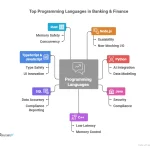
An LBO (leveraged buyout) refers to an acquisition of a company funded largely with debt. Usually managed by private equity managers on behalf of limited partners investors.
LBOs may present attractive advantages, yet there are certain risks that should be carefully assessed prior to engaging in such an acquisition strategy. These challenges can span financial, operational and market related concerns.
Equity
Leveraged buyouts (LBOs) provide many benefits, while also carrying potential risks. If you are contemplating an LBO, it is crucial that you carefully weigh both its advantages and drawbacks before making a decision.
A leveraged buyout is an acquisition financed with debt secured by assets, such as cash flow and hard assets. Typically, buyers put up 10 percent in equity while borrowing 90 percent.
There are four primary forms of leveraged buyouts. These are: (repackaging), split-up plan (or dismantlement plan), portfolio plan and savior plan. In general terms, repackaging involves purchasing an already public company through leveraged loans before offering it publicly as an IPO; split-up plans involve buying and dismantling units of an organization while portfolio plans acquire competitors to achieve synergies; finally the savior plan provides struggling companies with fresh capital injection.
Debt
Leveraged buyouts involve private equity firms purchasing other businesses with debt rather than their own cash, enabling the purchasers to invest less of their own funds while realizing greater profit than if all cash were used in purchasing it themselves. Leveraged buyouts offer investors significant returns depending on their strategy for success, offering substantial potential returns on their investments.
Investors engaging in leveraged buyouts often employ various forms of capital to complete an acquisition, including senior cash flow debt, integrated debt, seller financing, asset-based financing and mezzanine finance. Furthermore, they conduct thorough due diligence checks to verify the information provided by the target company is accurate and complete.
LBO models not only offer greater returns, but they can also grant greater control of an acquired company. This may be a vital element for entrepreneurs looking to take their business to new heights; however, the process does involve risks and complications; for instance expected operational efficiencies may not materialize as planned.
Cash flow
Leveraged buyouts (LBOs) can be an attractive means for business owners looking to cash out of their companies after investing. But these buyouts also present risks to both the acquired company and its assets due to their high debt/equity ratio, leaving it exposed to changes in market conditions or economic trends that could compromise profitability or cash flow of an acquired firm.
To minimize risks associated with LBO transactions, it is critical that collateral be diversified in order to lower risk posed by depreciated assets. Furthermore, it must ensure that a company boasts strong competitive advantages and an advantageous market position.
As interest rates improve and investor trepidation subsides, investors will once again have more chances to leveraged buyouts’ advantages.
Integration
Leveraged buyouts provide private equity firms with an effective means of acquiring companies with significant growth potential, yet these transactions come with their own set of challenges and risks. To mitigate such difficulties, it’s crucial that companies implement an established integration process and conduct regular risk evaluations.
Experienced management teams should also be put in place to oversee the integration process. A team that understands financial modeling, projections and acquisition structures will enable you to identify any challenges early and work to alleviate them effectively. Likewise, having an ongoing monitoring and risk evaluation system in place allows your company to remain aware of market fluctuations that might jeopardize its financial performance.
Final consideration is maintaining consistent cash flows in order to service a leveraged buyout debt burden. This is especially essential for seasonal or cyclical businesses which could quickly run into difficulties if their business experiences a dip in activity.







